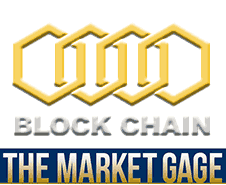
Gold continues its sell off stance as short sellers continue to add on their positions, as seen in last Friday’s commitment of traders report. Now that the price of Gold has broken thru the 50 DMA and the 200 DMA support levels in the yellow metal are not seen until the $1,248 level. Most of traders I spoke with that are holding on to short positions indicate they will probably cover their short positions before the next level of support is met.
ETF investors sold almost 10 tons of gold last week, which was the seventh consecutive week of redemptions. ETF investors have sold almost 46 tons of Gold so far in June, the most, since selling 69 tons last July.
The bond market is getting a lot of interest these days as seen by decreasing yields in the 10 year treasuries.
The Spot VIX, also known as Wall Street’s fear index, which measures the implied volatility of the S&P 500 Index over the next month, hit as high of 16.9 on Monday, almost four points higher than its average in the past year. The type of sentiment in overall markets should help the price of Gold stabilize a bit.
In my opinion, if these trends continue, these indicators should short circuit any additional sell off in the price of Gold and move the price higher. On the other hand, if for whatever reason this battle on trade wars is resolved, I expect the equity markets to rebound and the price of Gold to continue its decline.
Blockchain Technology Overview
We continue to be asked about cryptocurrencies and the Blockchain network, so I decided to give a basic lesson on all the components.
Blockchain 101
Cryptocurrencies are separate from Blockchain technology. Cryptocurrencies are a digital representation
of perceived value and the Blockchain network is a method for distributed transactions processing and storage.
At the core of a Blockchain platform lies a distributed transaction processing engine that validates and cryptographically seals transactions. Blockchains consist of sets of transactions that are sealed within a “block” using cryptographic algorithms. Successive blocks are linked to the preceding blocks by using hash values such that there is a sequential chain that is largely permanent and immutable.
Blockchain networks are comprised of near identical nodes operating in a distributed but independent manner. The network of nodes is used to validate the transactions and encapsulate them within blocks in a chain. Blockchain transactions are maintained in a distributed ledger that is kept in conformity across the nodes in the network via consensus algorithms.
Now that we have addressed the basics and established that Blockchain technology allows the creation of distributed transaction processing and storage networks, it should become easier to see the potential. Having a public or private network that allows for independent verification of records of transactions fills many needs across a number of industries. Blockchain records that have been hashed and connected to create an
immutable chain.
Blockchain Platforms — Now and Future
The current focus in the media on the cryptocurrency element of Blockchain has taken away a fair amount of attention away from the underlying technology. This is especially true as it relates to the more complete vision laid out by Blockchain pioneers. The growth of the current networks is pretty amazing. A few years ago, not many would have given odds that large decentralized networks consisting of thousands of independent nodes transacting millions of dollars in trades would be operating by this point in time.
The economic incentives provided by cryptocurrencies to support transaction processing is a case study that will mark this point in time in the history, much like other economic IT breakthroughs have done so in the past. The Blockchain story will fit in easily alongside the story of the early PC software manufacturers who sold software on floppy disks and created billion dollar markets. It will find its place in company of open source pioneers who created massively popular non-commercial software along with huge companies built on
top of this foundation. And it will slot in with cloud computing and server less companies who derived ways to not only make utility computing a reality but reshape IT architectures and deployments for many years to come.
Blockchain technology has the potential to transform every industry. The ability to create dependable workflows and allow for trustworthy transactions in a manner that is decentralized is a huge vision, but one that is not unattainable. The progress in Blockchain technology is real and the vision for the future is certainly within reach.
We at Dillon Gage are committed to give our readers the most up to date information on how the future of the Blockchain technology will be applied in the Precious Metals Industry.
Have a wonderful Wednesday.
Disclaimer: This editorial has been prepared by Walter Pehowich of Dillon Gage Metals for information and thought-provoking purposes only and does not purport to predict or forecast actual results. This editorial opinion is not to be construed as investment advice or as a recommendation regarding any particular security, commodity or course of action. Opinions expressed herein cannot be attributable to Dillon Gage. Reasonable people may disagree about the events discussed or opinions expressed herein. In the event any of the assumptions used herein do not come to fruition, results are likely to vary substantially. It is not a solicitation or advice to make any exchange in commodities, securities or other financial instruments. No part of this editorial may be reproduced in any manner, in whole or in part, without the prior written permission of Dillon Gage Metals. Dillon Gage Metals shall not have any liability for any damages of any kind whatsoever relating to this editorial. You should consult your advisers with respect to these areas. By posting this editorial, you acknowledge, understand and accept this disclaimer.
